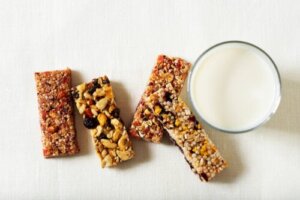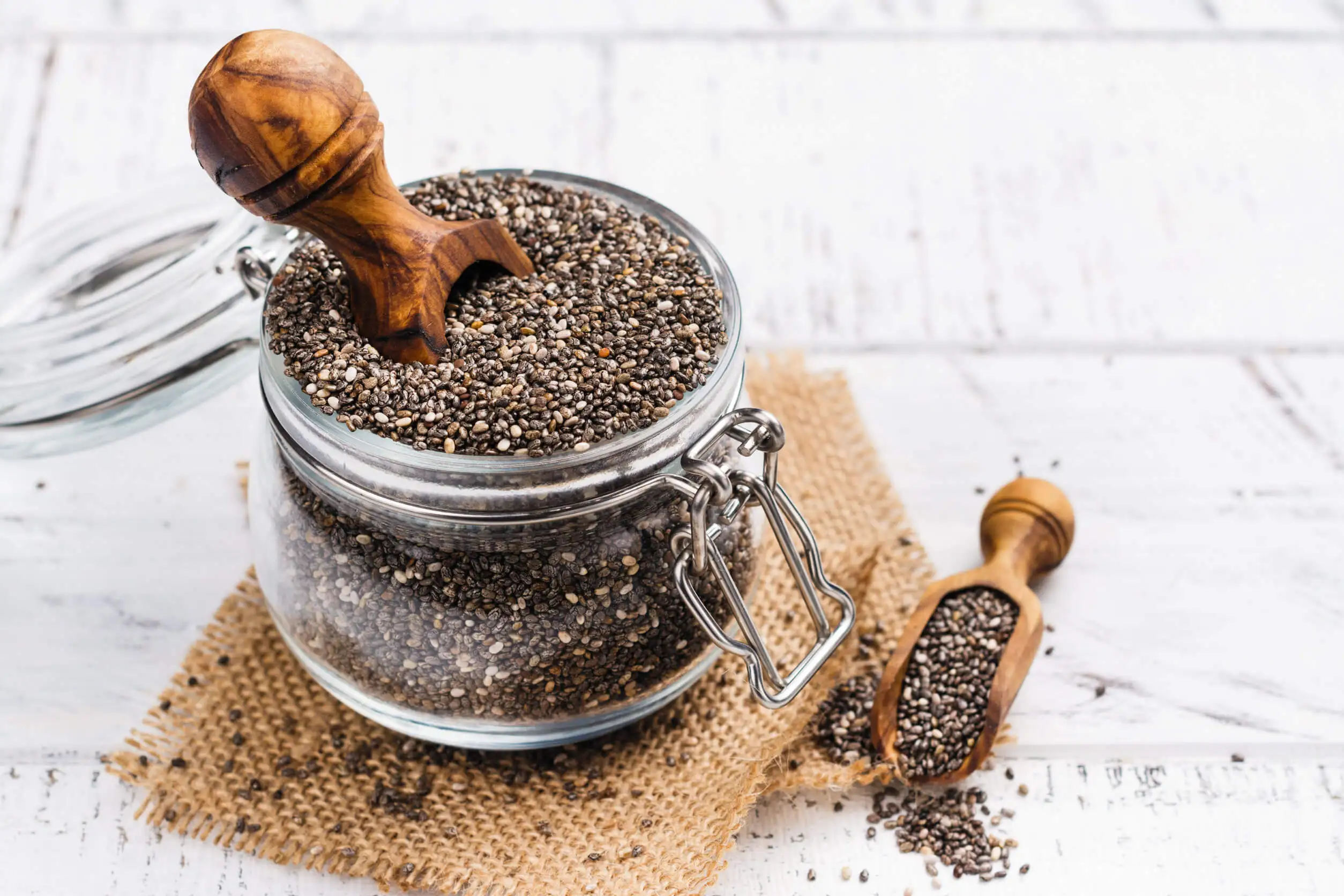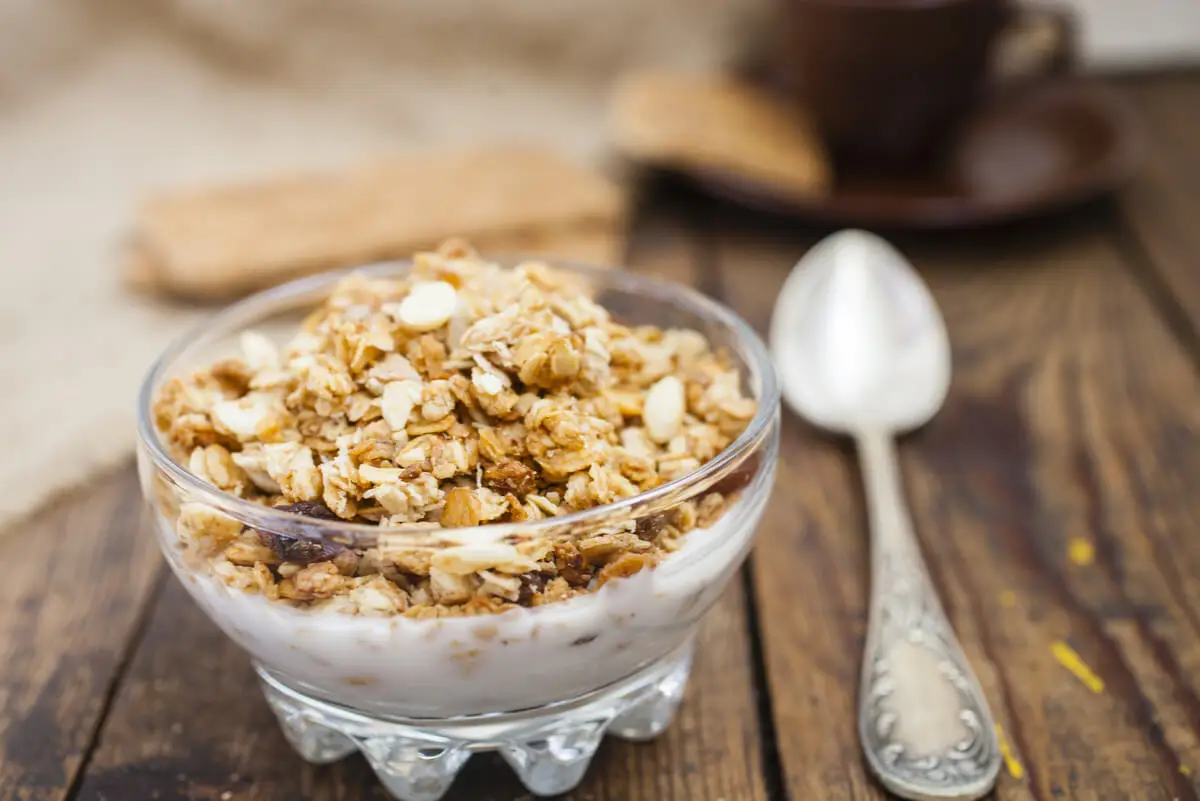7 Protein Snacks to Increase Muscle Mass


Written and verified by the nutritionist Maria Patricia Pinero Corredor
When it comes to increasing strength and muscle mass, protein is the most popular nutrient among athletes. A practical and healthy way to promote its consumption is through protein snacks.
Proteins not only enable muscle synthesis, but also increase satiety. The most commonly used food sources are milk, eggs, whey, soy, and casein.
When thinking about protein snacks, it’s necessary to combine different foods so that the protein is used to the maximum. For example, mixing cereals with dairy to compensate for the missing amino acids in one food and the other.
In this article, we’ll tell you about the best options that will help to create a substantial increase in muscle mass. Read on to make these preparations part of your menu.
What are proteins and what is their function?
Proteins are the nutrients that transport nitrogenous substances, necessary to repair and produce new cells. They include actin and myosin, which are the myofibrils responsible for muscle contraction. They also help to synthesize basic compounds to maintain a good state of health, such as antibodies, enzymes, and hormones.
These nutrients are made up of amino acids, of which there are 20 in total. Of these, 9 are called essential, since they must be supplied in the diet.
The other 11 can be produced by the body itself. But for a protein to be of high quality, it must have all 20 amino acids, as is the case with egg white.
As most proteins aren’t complete, it’s often necessary to combine them to increase the amount of amino acids.
How do proteins help to form muscles?
The proteins in the body are constantly being formed and degraded. In skeletal muscle, in response to exercise, a protein exchange takes place.
One study found that exercise reverses the effects of aging, such as muscle atrophy, in elderly people. Up to 50% improvement in muscle strength.
However, other authors have found controversy in the use of protein on strength and muscle mass. Although in high-performance athletes, it has been recommended to increase protein intake up to 2 or 3 times more.
Read more: Types of Proteins and Their Functions
The best protein snacks to increase muscle mass
There are several options of snacks that can be part of our diet, but not all of them are a source of high-quality protein. In addition, protein snacks can be combined with other nutrients, to help maintain a good state of health.
Below, we’ll give you a list of the best snacks that will provide the amino acids needed to build muscle tissue and add nutrients and calories to the diet.
1. Fermented milk with chia
Chia is a pseudocereal native to Central America, which is recognized for its high protein levels. between 15 to 25%. But it also contains omega-3 fats, antioxidants, fiber, vitamins, and many minerals. However, it doesn’t contain some essential amino acids, such as lysine, threonine, and leucine.
For this reason, it’s suggested to prepare it with fermented milk, which is a source of these amino acids and can compensate. This snack is very easy to prepare.
First, 2 tablespoons of chia seeds are hydrated with water for 2 hours. Then, add a cup of cold or room temperature milk.

2. Tomato and tuna salad
Tuna contains 22% high quality protein and a higher biological value than meat. Its essential amino acid content is above the FAO recommendations.
This recipe is as simple as mixing a 120-gram (5 oz) portion of tuna with chopped fresh tomato. You can add cilantro or parsley to the salad and 1 teaspoon of olive oil.
A serving of this recipe gives 26 grams (1 oz) of protein.
Serve with crackers or a serving of whole wheat bread. In case you don’t have fresh tuna, you can use canned.
Read more here: Tuna Omelet: Quick and Easy Recipe
3. Nut-based energy bars
To make these bars, a combination of nuts and dried fruits is used as a base. Nuts contain 20% protein of good biological value, omega-3 fat, B vitamins, and vitamin E.
You can make it without baking. Add 1/2 cup of almonds, 1 pinch of salt and 1/2 cup of instant oatmeal, and then stir.
Separately, mix 1/2 cup almond butter with 1/4 cup honey and 1 teaspoon coconut oil. Add to the nuts and mix well. You can then make servings of bars to use as a snack.
4. Quinoa, chicken, and basil salad
Quinoa is another pseudocereal that some recognize as a superfood. Its nutrients are concentrated and it’s consumed whole, without processing.
The biological value of its protein is higher than that of wheat, rice, and corn, and comparable to meats, eggs, and milk.
When combined with chicken, it helps to enrich the quantity and quality of the protein intake, becoming a snack with more than 15 grams of protein.
To prepare it you must wash 1/4 cup of black and white quinoa and sauté it with a dash of oil in a pan until it gives us a nutty smell. Then add twice as much water and boil it for 15 minutes. Let it rest and strain it.
Chop 1/2 a tomato, and 1/2 an onion and mix it with 1/2 a can of corn. In a bowl combine all the ingredients, mixing them with 1/4 bunch of basil, 3 tablespoons of boiled shredded chicken, and 1 tablespoon of feta cheese.
Add salt, oil, pepper and vinegar as seasoning to taste.
5. Omelette with chicken and goat cheese
Eggs are the best option for a high protein snack of the highest quality. In addition, it’s very easy to prepare and there’s a wide variety of dishes we can use them in. The omelet is a classic dish full of flavor and nutritional goodness.
When we mix the egg with chicken and cheese, we increase the protein content even more. This way we guarantee the synthesis of muscle tissue.
Heat a non-stick frying pan and brush with a small amount of olive oil. Beat 2 eggs and add salt and pepper to taste, with 2 tablespoons of milk to make them fluffier.
Flip and add 2 tablespoons of shredded chicken and 1 tablespoon of goat cheese. Fold the omelet over and seal it with another tablespoon of goat cheese until melted.
6. Greek yogurt with flaked oatmeal
Greek yogurt is a dairy product that’s more concentrated in protein than traditional yogurt. A 100-gram (4 oz) serving provides 10 grams (0.4 oz) of protein.
Flaked oats provide additional protein, although they’re deficient in lysine. Mixing it with yogurt makes up for this deficiency. This will give us a very high quality snack.

7. Pumpkin seeds
Use a nonstick pan and add a drizzle of olive oil. Put in 1 cup of pumpkin seeds and fry for 20 minutes, stirring every 5 minutes. Frying concentrates the protein in the seeds, providing 12 grams for this portion. You can add a pinch of salt.
In addition, these seeds are a source of omega 3 fat, niacin, B complex vitamins, and minerals such as iron, zinc, and magnesium. Their value in insoluble fiber prevents constipation.
Ensures the good use of protein snacks
In order for protein snacks to increase muscle mass, there must be a balance in the consumption of the rest of the nutrients, including your calorie count. In this way, you can ensure that the protein is used in the formation of muscle tissue and not for energy.
All cited sources were thoroughly reviewed by our team to ensure their quality, reliability, currency, and validity. The bibliography of this article was considered reliable and of academic or scientific accuracy.
- MedlinePlus. Biblioteca Nacional de Medicina. ¿Qué son las proteínas y que es lo que hacen? Disponible en: https://medlineplus.gov/spanish/genetica/entender/comofuncionangenes/proteina/#:~:text=Al%20igual%20que%20algunos%20tipos,diferentes%20c%C3%A9lulas%2C%20tejidos%20y%20%C3%B3rganos.&text=Estas%20prote%C3%ADnas%20brindan%20estructura%20y,que%20el%20cuerpo%20se%20mueva.
- Phillips SM. Protein Requirements and Supplementation in strength sports. Nutrition. 2004;20(7/8):689-695. Disponible en: https://pubmed.ncbi.nlm.nih.gov/15212752/
- Melov S, Tarnopolsky MA, Beckman K, Felkey K, Hubbard A. Resistance exercise reverse aging in human skeletal muscle. PLoS ONE. 2007;2(5): e465. Disponible en: https://www.ncbi.nlm.nih.gov/pmc/articles/PMC1866181/#:~:text=Gene%20expression%20changes%20associated%20with,at%20an%20FDR%20of%205%25.
- Lowery LM, Devia L. Dietary protein safety and resistance exercise: what do we really know?. J Int Soc Sports Nutr. 2009;6:3. Disponible en: https://pubmed.ncbi.nlm.nih.gov/19138405/
- Xingú López, Andrés; González Huerta, Andrés; de la Cruz Torrez, Eulogio; SangermanJarquín, Dora Ma.; Orozco de Rosas, Guillermo; Rubí Arriaga, Martin Chía (Salvia hispanica L.) situación actual y tendencias futuras Revista Mexicana de Ciencias Agrícolas, vol. 8, núm. 7, septiembre-noviembre, 2017, pp. 1619-1631 Disponible en: https://www.redalyc.org/articulo.oa?id=263153520010
- ICIAR ASTIASARAN, J. ALFREDO MARTINEZ. ALIMENTOS: COMPOSICION Y PROPIEDADES
- S.A. MCGRAW-HILL / INTERAMERICANA DE ESPAÑA. 2000, 364 páginas. Disponible en: https://www.casadellibro.com/libro-alimentos-composicion-y-propiedades/9788448603052/729803
- Organización de las Naciones Unidas para la Alimentación y la Agricultura. Proteínas. Disponible en: https://www.fao.org/nutrition/requisitos-nutricionales/proteins/es/
- Wilfredo Rojas, Amalia Vargas Mena y Milton Pinto Porcel. La diversidad genética de la quinua: potenciales usos en el mejoramiento y agroindustria. RIIARn Vol.3(2):114-124. Julio – Diciembre 2016. ISSN: 2518-6868. Disponible en: http://www.scielo.org.bo/pdf/riiarn/v3n2/v3n2_a01.pdf
- Fundación Española de Nutrición. FEN. Frutos secos. Disponible en: https://www.fen.org.es/storage/app/media/flipbook/mercado-alimentos-fen/009-Frutos-Secos.pdf
- Tabla Nutricional: Yogur griego. Todoalimentos. Disponible en: http://www.todoalimentos.org/yogur-griego/
This text is provided for informational purposes only and does not replace consultation with a professional. If in doubt, consult your specialist.








